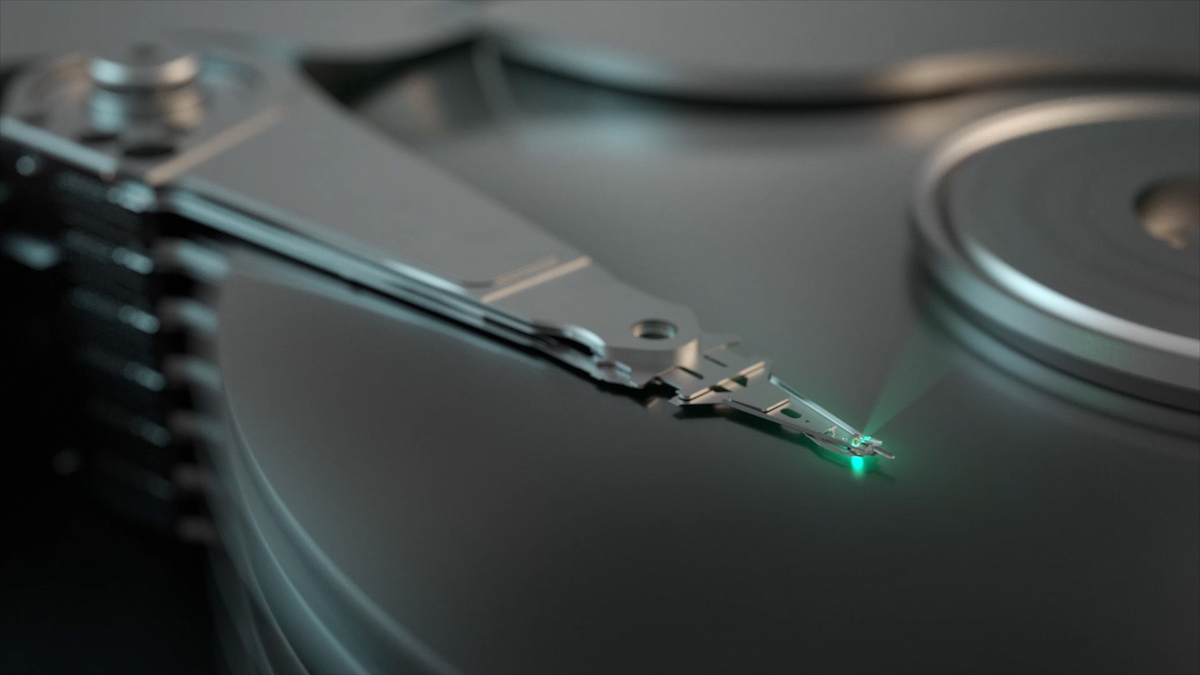60TB hard drives arriving in 2028 according to industry roadmap — HDD capacity forecast to double in four years
HDD capacity set to double in four years.

The arrival of energy-assisted magnetic recording (EAMR) technologies like Seagate's HAMR will play a crucial role in accelerating HDD capacity growth in the coming years. According to the new IEEE International Roadmap for Devices and Systems Mass Data Storage, we will see 60 TB hard disk drives in 2028. If the prediction is accurate, we will see HDD storage capacity doubling in just four years, something that did not happen for a while. Also, IEEE believes that HDD unit sales will increase.
IEEE's latest HDD development roadmap spans 2022 to 2037 and covers 15 years of hard drive evolution. The arrival of HAMR in 2024 will play a pivotal role in the increase in HDD capacity (even though Western Digital has managed to stay competitive with Seagate's HAMR HDDs using a set of its technologies) over the next few years. IEEE engineers expect HDDs to leapfrog to 40TB in 2025 and 60TB in 2028, doubling capacity from 30TB in 2024. By 2037, there will be 100TB of storage space, according to IEEE.
To get to those extreme capacities, HDD makers will have to increase the areal density of their platters steadily. To get to 40TB per drive, they will have to get to 2 TB/inch^2 in 2025 and then to over 4 TB/inch^2 in 2028 to build 60TB HDDs. By 2037, areal density will grow to over 10 Tb/inch^2. Increasing areal density will necessitate the use of new media, magnetic films, and all-new write and read heads.

"Critical advances are required in magnetic and nonmagnetic materials for functional HDD head read and write performance at high areal densities and operating at high data rates," the IEEE document reads. "These advances include improvements in disk media and overcoats as well as heads capable of supporting densities in excess of 1 Tb/in^2, changes in media substrate technology, and dielectric films less than 1nm thick for advanced giant magnetoresistive (GMR) and tunneling magnetoresistive (TMR) heads."
It is hard to say which companies, like Seagate, Toshiba, and Western Digital, will be able to mass produce over the next four years. However, the IEEE roadmap seems to be aligned with what Seagate publicly announced a year ago: these are 4TB platters and 40TB HDDs over the next two years (i.e., 2025).
As hard drives will remain at 7200 RPM, IEEE does not expect any tangible seek time or rotational latency improvements over the coming years. Yet, due to the increase in areal density, HDDs will gain sequential read and write speeds but further reduce their per-TB IOPS performance (at least when it comes to single-actuator HDDs).
What is surprising is that IEEE believes that hard drive unit sales will increase from 166 million in 2022 to 208 million in 2028 and 359 million in 2037. The world is going to need loads of cheap bulk storage with decent performance, and HDDs are perfect candidates to address this need. However, if this happens, of course, it will reverse a decade-long trend of HDD unit sales decline.
Stay On the Cutting Edge: Get the Tom's Hardware Newsletter
Get Tom's Hardware's best news and in-depth reviews, straight to your inbox.
While IEEE roadmaps are generally predictions based on numerous factors, for now, the future looks bright for hard disk drives.

Anton Shilov is a contributing writer at Tom’s Hardware. Over the past couple of decades, he has covered everything from CPUs and GPUs to supercomputers and from modern process technologies and latest fab tools to high-tech industry trends.
-
JRStern I'm still completely boggled by today's 20tb spinners.Reply
Y'know, when I was a lad, we had to carry a 14-inch full cartridge uphill through the snow for miles for a measly 100 megabytes ... yes mega, child, listen to me, ...
So when you have 1nm tolerance physical rotating devices, and two black holes collide a billion light years away, is that going to crash my 60tb drive? -
Notton A capacity increase, along with price decrease in the 2.5" SATA market would be welcome.Reply
It's been stuck at 2TB - 7mm thickness and 5TB - 15mm forever.
A 6TB launched this year, but it's 19mm thick.
2.5" 8TB SSD prices are astronomical. -
Rosen Georgiev A capacity increase, but noting new about redundancy and RAIDs.Reply
I cannot imagine how even raid6 with 60TB spinners will survive. Mirror with 60TB disks will require the eternity. -
dimar My only wish is that these companies work on reliability first. I'd like a HDD to last at least 10 years please.Reply